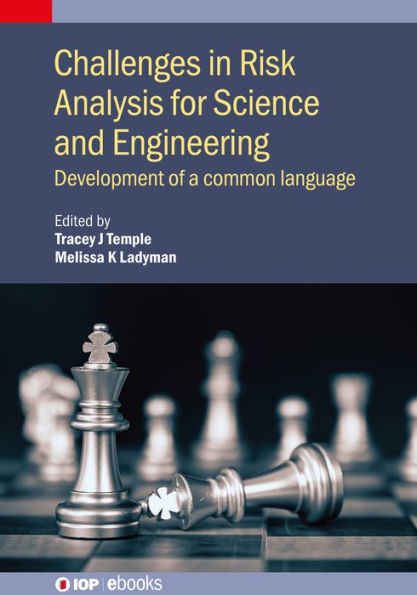The aim of this reference text is to provide a common language and consistent approach to risk assessment across science and engineering disciplines through the collation of detailed, real examples and scenarios.
Examples are drawn from a variety of industries and cover key risk topics such as tolerability, data collection, hazard identification and hazard interpretation. The approaches communicate common challenges and are compared and contrasted, with a particular focus on the terminology used.
The book is essential reading for scientists and engineers that undertake risk assessment, including industry practitioners, researchers in academia and those with a general interest in improving risk assessment processes. It is also a valuable reference for science and engineering students that regularly undertake risk assessments or study courses on risk assessment.
Key Features:
- Proposes a common language and consistent approach to risk assessment across science and engineering disciplines
- Creates a bridge between industrial and academic approaches to risk analysis and encourages cross-disciplinary collaboration
- Collates detailed practical examples of risk assessment
- Explores the diverse undertaking of risk assessment in a wide range of disciplines
- Analyses the approaches taken, with a particular focus on the terminology used
The aim of this reference text is to provide a common language and consistent approach to risk assessment across science and engineering disciplines through the collation of detailed, real examples and scenarios.
Examples are drawn from a variety of industries and cover key risk topics such as tolerability, data collection, hazard identification and hazard interpretation. The approaches communicate common challenges and are compared and contrasted, with a particular focus on the terminology used.
The book is essential reading for scientists and engineers that undertake risk assessment, including industry practitioners, researchers in academia and those with a general interest in improving risk assessment processes. It is also a valuable reference for science and engineering students that regularly undertake risk assessments or study courses on risk assessment.
Key Features:
- Proposes a common language and consistent approach to risk assessment across science and engineering disciplines
- Creates a bridge between industrial and academic approaches to risk analysis and encourages cross-disciplinary collaboration
- Collates detailed practical examples of risk assessment
- Explores the diverse undertaking of risk assessment in a wide range of disciplines
- Analyses the approaches taken, with a particular focus on the terminology used

Challenges in Risk Analysis for Science and Engineering: Development of a common language
380
Challenges in Risk Analysis for Science and Engineering: Development of a common language
380Related collections and offers

Product Details
| ISBN-13: | 9780750336437 |
|---|---|
| Publisher: | Institute of Physics Publishing |
| Publication date: | 10/31/2022 |
| Series: | IOP ebooks |
| Sold by: | Barnes & Noble |
| Format: | eBook |
| Pages: | 380 |
| File size: | 13 MB |
| Note: | This product may take a few minutes to download. |
